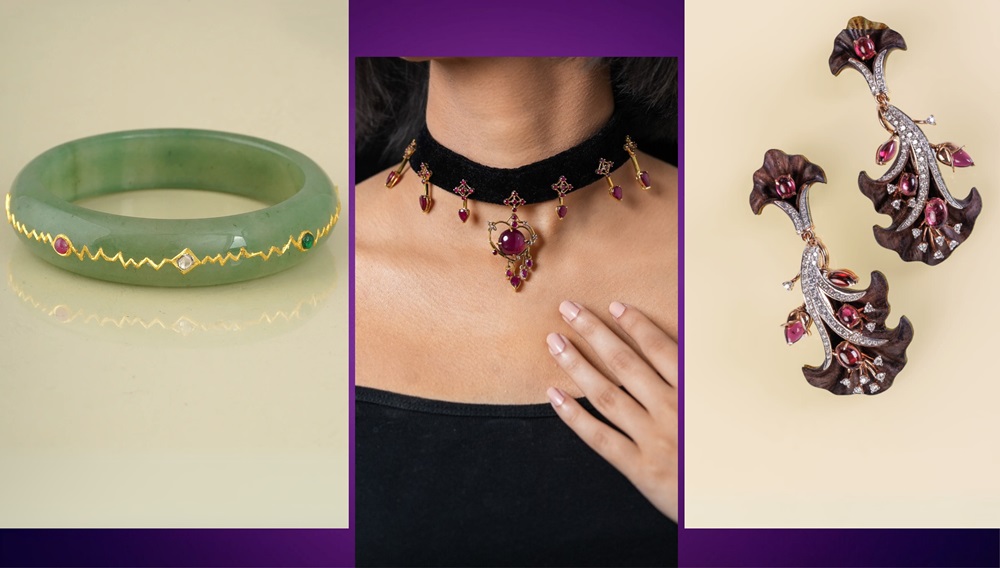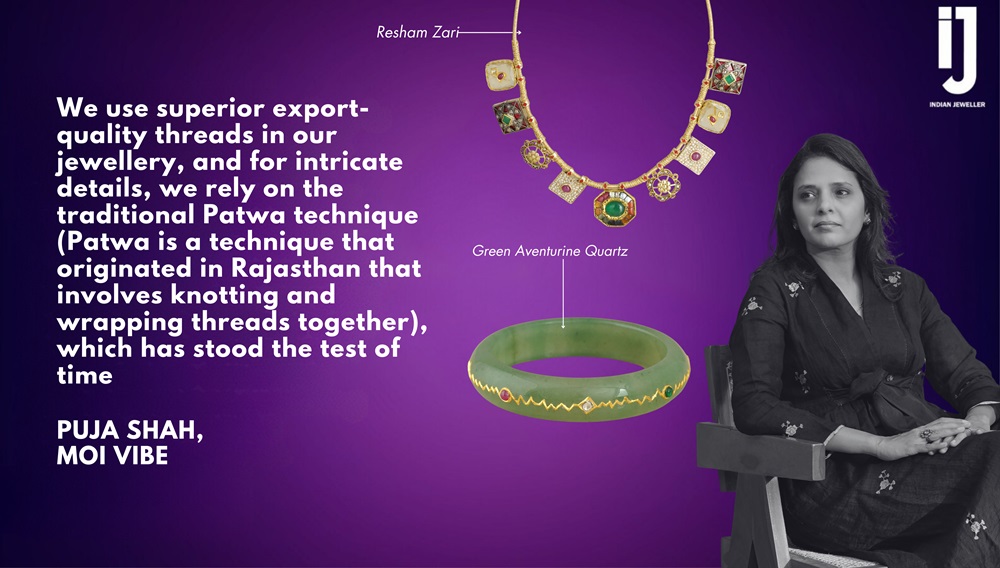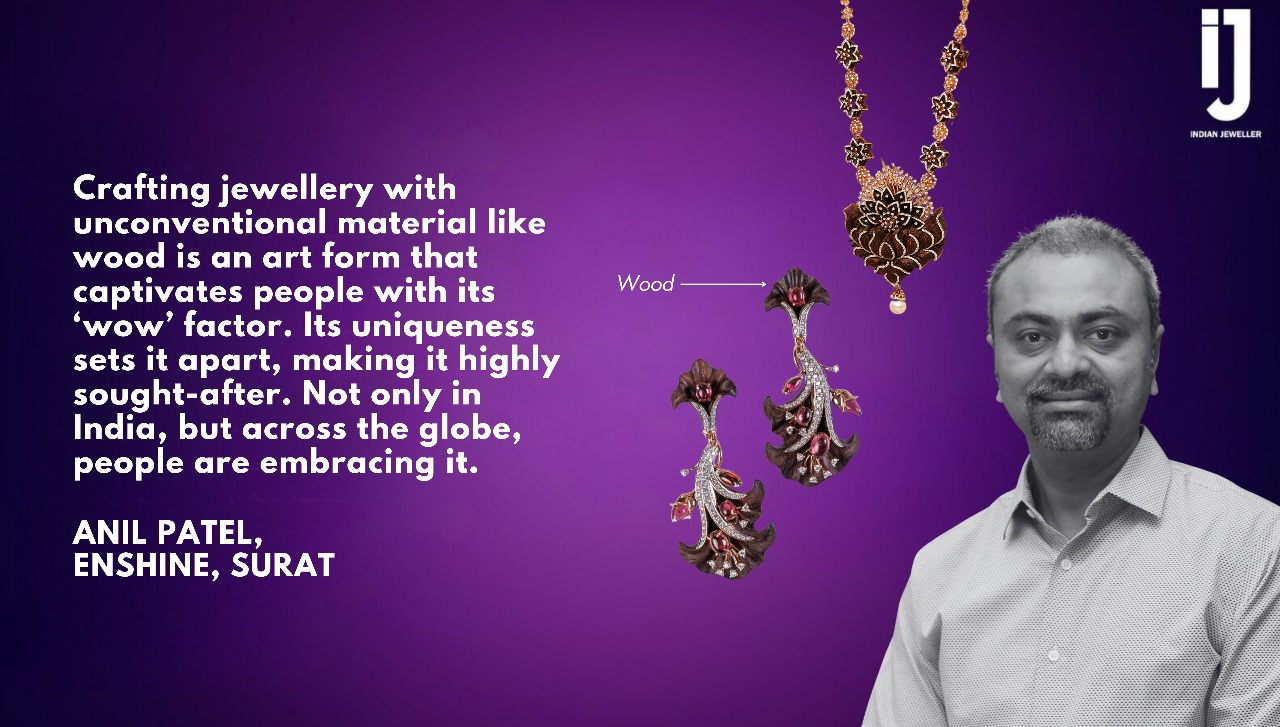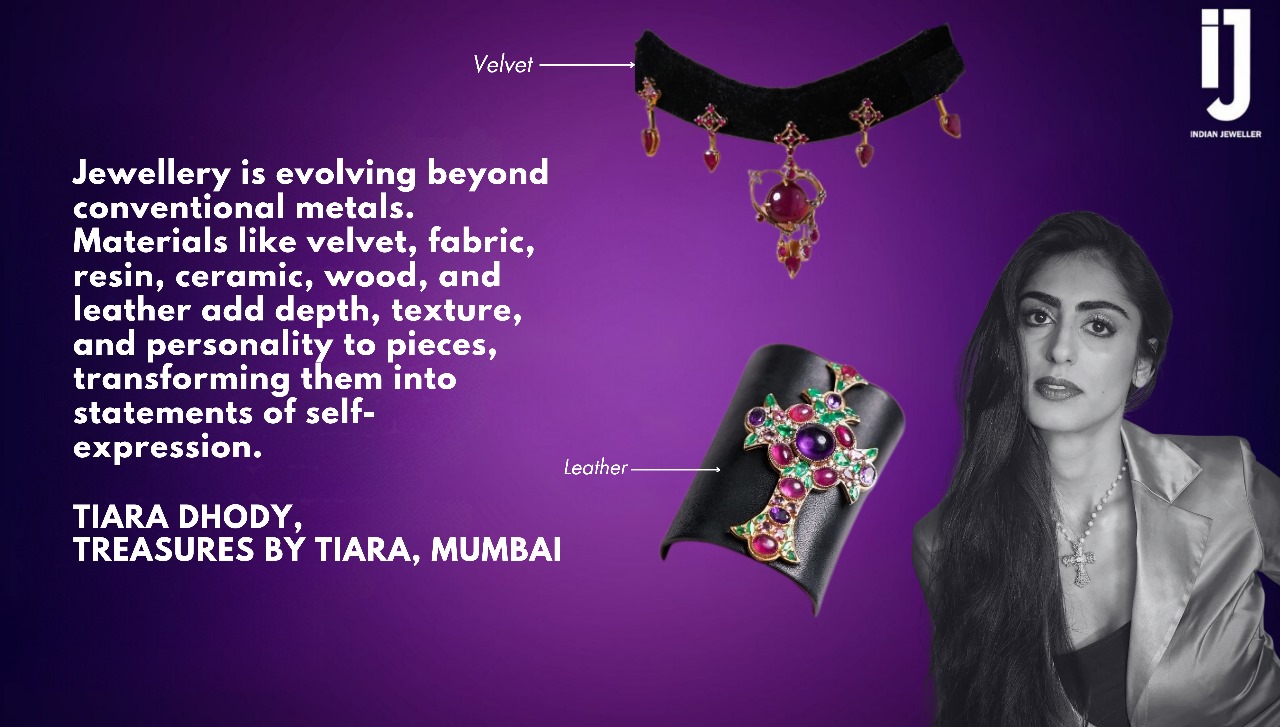Jewellery has long been synonymous with precious metals like gold, silver, and platinum. However, as consumer preferences evolve, designers are pushing the boundaries by incorporating unconventional materials such as fabric, ceramic, resin, wood, and leather accents to create new-age jewellery, finds out Priyanka Talreja Garegrat

In an age when consumers are becoming more and more choosy, jewellers are resorting to out-of-the-box ideas to woo them, and hold their interest. One such step is using unconventional materials, in place of the usual gold, silver, and other metals. This shift is redefining jewellery, offering a dynamic blend of tradition and modernity.

For jewellery designers, exploring new materials is not just about aesthetics; it is about innovation and storytelling. "Jewellery is evolving beyond conventional metals," says Tiara Dhody, Treasures by Tiara, Mumbai. "Materials like velvet, fabric, resin, ceramic, wood, and leather add depth, texture, and personality to pieces, transforming them into statements of self-expression,” she adds. Dhody enjoys working with velvet bands for chokers, combining an old-world charm with contemporary design. Similarly, resin and ceramic are gaining traction for their ability to create bold, artistic forms that remain lightweight and wearable. "Customers today are drawn to jewellery that feels unique, versatile, and has an element of storytelling," Dhody says.
Similarly, Anil Patel of Enshine, Surat, is integrating wood into his jewellery. "I use wood in my designs. Wood allows carving, and elevates the use of gold and diamonds. The flexibility of shape and texture makes it an exciting material to work with, and jewellers are happy to introduce this innovation.
Puja Shah, Founder of Moi Vibe, notes that while non-traditional materials are widely used in international markets, they are still fairly rare in Indian fine jewellery. "The uniqueness they lend to any design is what makes them appealing. Historically, Indian jewellery has incorporated rare materials — from the Harappan period’s conch shell bangles, to the archer's ring crafted from jadeite during Shah Jahan's era. This tradition continues to inspire our work today,” Shah says.

With innovation comes the challenge of ensuring these new materials are durable enough for everyday wear. Jewellery is often seen as a lifelong investment, so designers must carefully select materials that can stand the test of time.
Patel emphasizes the importance of research and testing, saying, "Jewellers have tested natural wood to ensure it is water-resistant and can be repaired if broken. Jewellery is fragile, so we do extensive R&D before handing over pieces to customers. Nothing is permanent — even gold breaks — but we ensure that repairs are possible."
For Moi Vibe, traditional techniques play a crucial role in durability. "We use superior export-quality threads in our jewellery, and for intricate details, we rely on the traditional Patwa technique (Patwa is a technique that originated in Rajasthan that involves knotting and wrapping threads together), which has stood the test of time," explains Shah.

Combining unconventional materials with traditional materials, such as gold, silver, requires a keen eye for design and craftsmanship. "A lot of expertise is needed to ensure the materials are combined properly. I rely on my knowledge, and work closely with my team to oversee each step of the process,” Patel says.
At Treasures by Tiara, blending materials is an art form in itself. "When incorporating fabric or velvet into jewellery, we use secure metal fastenings and clasps that enhance durability while maintaining aesthetic appeal," says Dhody. "For resin-based designs, we embed precious stones or gold leaf details within the material, creating an ethereal, floating effect. Another exciting approach is mixing ceramic or wood with metal accents — using contrast to highlight the beauty of both elements. This fusion allows jewellery to retain its luxury while embracing a fresh, contemporary edge,” she adds.
The increasing demand for jewellery that reflects personal style and individuality is gaining ground. As gold prices continue to rise, consumers are seeking alternative materials that offer both affordability and uniqueness.
Patel notes this change in buyer behaviour, saying, "Crafting jewellery with unconventional material like wood is an art form that captivates people with its ‘wow’ factor. Its uniqueness sets it apart, making it highly sought-after. Not only in India, but across the globe, people are embracing it. The making charges of a single handcrafted wooden necklace can cost as much as three to four gold necklaces, but its uniqueness and artistic value make it highly desirable.
Dhody sees a surge in sculptural jewellery, oversized cuffs, and layered designs that mix metals with unexpected materials. "People want jewellery that reflects their personality through texture, colour, and a mix of materials,” she says.
As the jewellery industry embraces new materials, the concept of what defines luxury is expanding. From fabric and velvet to wood and thread, these materials bring a freshness to jewellery. While traditional metals remain timeless, the fusion of innovative materials is carving out a space where craftsmanship meets contemporary artistry. This evolution ensures that jewellery continues to be not just an adornment, but a reflection of personality, heritage, and forward-thinking design.
Be the first to comment